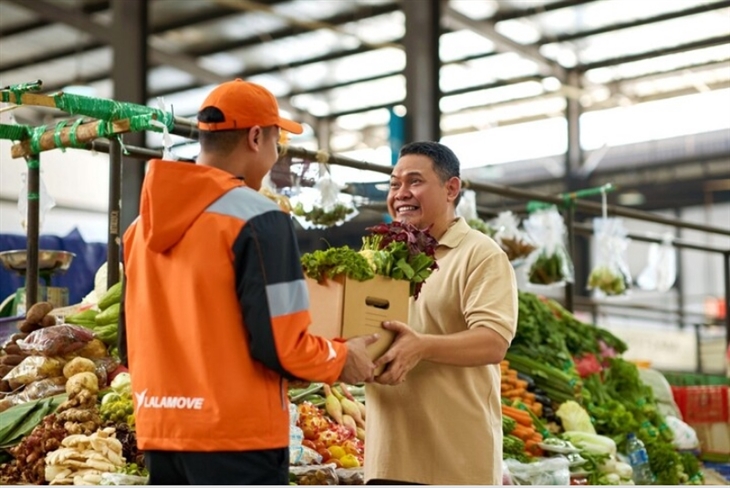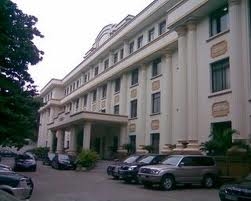Reducing costs from source creates export advantages for Vietnamese agricultural products
Thursday, August 7,2025
AsemconnectVietnam - Agricultural exports are growing strongly, aiming for 70 billion USD by 2025 but high logistics costs have reduced domestic competitiveness of enterprises.
High logistics costs
In the first six months of 2025, agricultural products continued to play a key role in export structure, aiming for a target of 70 billion USD. However, high logistics costs are still a simmering challenge, eroding profits and reducing competitiveness of Vietnamese agricultural products and food right at home.
According to Mr. Dang Phuc Nguyen, General Secretary of Vietnam Fruit and Vegetable Association, logistics costs can currently account for up to 30% of product costs. Meanwhile, cold storage and cold transportation infrastructure in Vietnam has not yet been developed synchronously. For fresh products such as vegetables, tubers and fruits, transportation time and storage conditions directly affect quality when they reach consumers.
Not stopping there, post-harvest losses in many agricultural growing areas still fluctuate from 20 - 40% due to lack of standard preservation systems or specialized means of transportation. Enterprises have to bear additional costs and face risk of reduced quality, while consumers have to pay high prices for products that may not meet requirements.
This challenge does not only exist in fresh products. For processed products, especially small businesses selling through e-commerce, cost of delivery is also a major obstacle in competition.
In recent shares, Mr. Nguyen Ngoc Luan, General Director of Meet More Company, said that a box of Meet More coffee has a listed price of 85,000 VND, but after adding the delivery fee, the price to consumers can be up to 105,000 VND. "To compete with cheap foreign goods, businesses are forced to reduce prices. But if they reduce deeply, there will be no profit left," said Mr. Ngoc Luan.
Therefore, although Meet More products are now available in more than 20 countries, in domestic market, maintaining reasonable prices with efficient delivery services is still a pressing problem. In context of increasingly price-sensitive consumers, high logistics costs not only increase prices but also make domestic products more difficult to access in the mass segment - where cheap imported goods are dominating.
Optimizing operations to compete
High transportation costs are forcing many Vietnamese businesses, especially those distributing agricultural products and food, to change way they organize their operations, from self-managing their fleet to choosing delivery partners. Instead of investing in their own vehicles or depending on non-specialized units, businesses are shifting to professional transportation platforms.
According to statistics from Lalamove - a technology-based transportation platform, the agricultural product distribution customer group currently accounts for 32% of this business's total truck orders. This shows increasing demand for specialized, flexible and cost-effective transportation services. Notably, many businesses after switching to this platform said that they could save up to 30% of transportation costs compared to before.
According to businesses, instead of having to wait for orders to be combined to have enough large trucks, they can now choose small trucks, vans with specialized containers such as closed containers, insulated containers or refrigerated containers, helping to ensure quality of goods, while shortening delivery time.
A representative of Farmers Market - a vegetable and fruit distributor in Ho Chi Minh City - said that in the past, it took us a long time to collect enough orders for a large truck. Now, it only takes a few minutes to call a van, deliver quickly, at the right temperature, significantly reducing costs and losses.
In addition, switching from non-specialized vehicles such as three-wheelers to standardized trucks also helps businesses minimize the impact of weather and other unusual factors in transportation.
That is the story of small and medium-sized enterprises, while large-scale enterprises will use the application programming interface (API) of transport unit into internal system to synchronously manage many branches, proactively distributing by region. Streamlining operations also helps them not need to invest in their own fleet, reducing fixed costs while still maintaining initiative and market coverage.
Source: Vitic/ congthuong.vn
In the first six months of 2025, agricultural products continued to play a key role in export structure, aiming for a target of 70 billion USD. However, high logistics costs are still a simmering challenge, eroding profits and reducing competitiveness of Vietnamese agricultural products and food right at home.
According to Mr. Dang Phuc Nguyen, General Secretary of Vietnam Fruit and Vegetable Association, logistics costs can currently account for up to 30% of product costs. Meanwhile, cold storage and cold transportation infrastructure in Vietnam has not yet been developed synchronously. For fresh products such as vegetables, tubers and fruits, transportation time and storage conditions directly affect quality when they reach consumers.
Not stopping there, post-harvest losses in many agricultural growing areas still fluctuate from 20 - 40% due to lack of standard preservation systems or specialized means of transportation. Enterprises have to bear additional costs and face risk of reduced quality, while consumers have to pay high prices for products that may not meet requirements.
This challenge does not only exist in fresh products. For processed products, especially small businesses selling through e-commerce, cost of delivery is also a major obstacle in competition.
In recent shares, Mr. Nguyen Ngoc Luan, General Director of Meet More Company, said that a box of Meet More coffee has a listed price of 85,000 VND, but after adding the delivery fee, the price to consumers can be up to 105,000 VND. "To compete with cheap foreign goods, businesses are forced to reduce prices. But if they reduce deeply, there will be no profit left," said Mr. Ngoc Luan.
Therefore, although Meet More products are now available in more than 20 countries, in domestic market, maintaining reasonable prices with efficient delivery services is still a pressing problem. In context of increasingly price-sensitive consumers, high logistics costs not only increase prices but also make domestic products more difficult to access in the mass segment - where cheap imported goods are dominating.
Optimizing operations to compete
High transportation costs are forcing many Vietnamese businesses, especially those distributing agricultural products and food, to change way they organize their operations, from self-managing their fleet to choosing delivery partners. Instead of investing in their own vehicles or depending on non-specialized units, businesses are shifting to professional transportation platforms.
According to statistics from Lalamove - a technology-based transportation platform, the agricultural product distribution customer group currently accounts for 32% of this business's total truck orders. This shows increasing demand for specialized, flexible and cost-effective transportation services. Notably, many businesses after switching to this platform said that they could save up to 30% of transportation costs compared to before.
According to businesses, instead of having to wait for orders to be combined to have enough large trucks, they can now choose small trucks, vans with specialized containers such as closed containers, insulated containers or refrigerated containers, helping to ensure quality of goods, while shortening delivery time.
A representative of Farmers Market - a vegetable and fruit distributor in Ho Chi Minh City - said that in the past, it took us a long time to collect enough orders for a large truck. Now, it only takes a few minutes to call a van, deliver quickly, at the right temperature, significantly reducing costs and losses.
In addition, switching from non-specialized vehicles such as three-wheelers to standardized trucks also helps businesses minimize the impact of weather and other unusual factors in transportation.
That is the story of small and medium-sized enterprises, while large-scale enterprises will use the application programming interface (API) of transport unit into internal system to synchronously manage many branches, proactively distributing by region. Streamlining operations also helps them not need to invest in their own fleet, reducing fixed costs while still maintaining initiative and market coverage.
Source: Vitic/ congthuong.vn
Agricultural, forestry and fishery exports reached nearly 40 billion USD
Seafood exports may grow by double digits
Three strategic pillars for national export mission
Super project on oil refining worth more than 20 billion USD to be built
Africa – potential destination for Vietnamese goods
The seafood industry aims for a target of 10 billion USD in 2025
Fruit and vegetable exports estimated to exceed 3.8 billion USD in 7 months
Key solutions for Vietnam's exports in last months of 2025
Vietnam's economy saw strong growth, expected to accelerate
Vietnam's fertilizer exports and imports in first 6 months of 2025
Trao đổi thương mại Việt Nam – Đức 6 tháng đầu năm 2025
Vietnam seafood market – July 2025
Vietnam cashew market July 2025
Vietnam animal feed market in first half of 2025

Plan of Hai Duong province for a period of 2021 - 2030, ...
Organize space reasonably and harmoniously, focusing on connecting Hai Duong in common development space, actively contributing to the ...Plan of Hau Giang province in a period of 2021 - 2030, ...
Sustainable forestry development program in a period of ...

AI opens new path for image industry: Insiders
Though the term "image industry" remains relatively new in the local context, the development of a creative ecosystem driven by AI will ...Hanoi’s street food culture gains ground with Michelin nods
Draw held for 2025 Davis Cup Asia/Oceania Group III in Bac ...
Da Nang Museum opens an exhibition of rare ancient ...
An Giang races to complete UNESCO nomination dossier for ...



